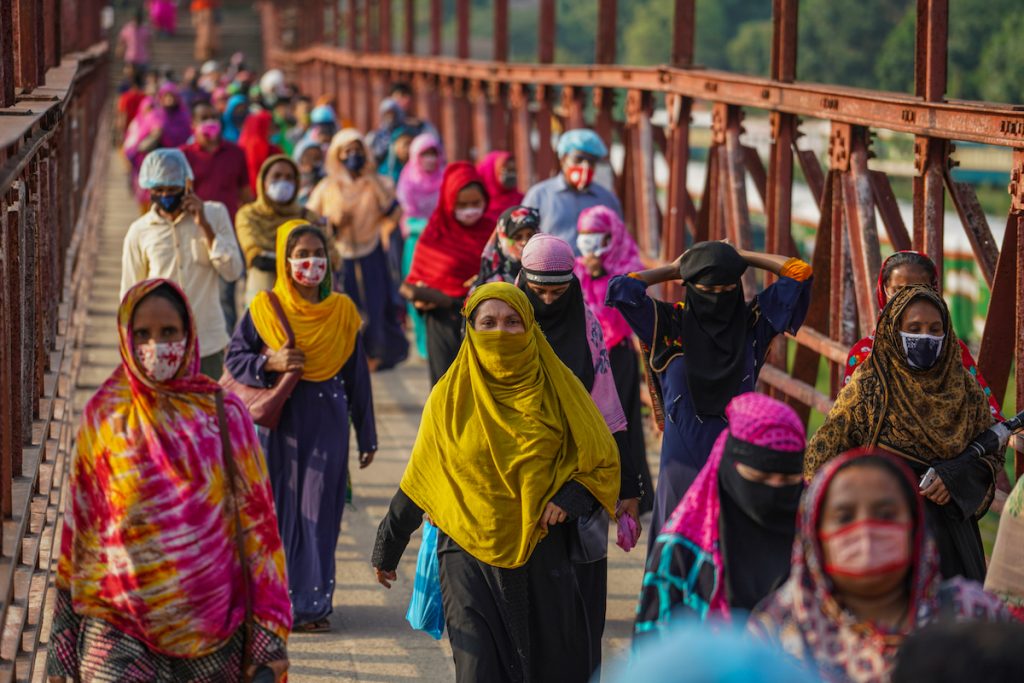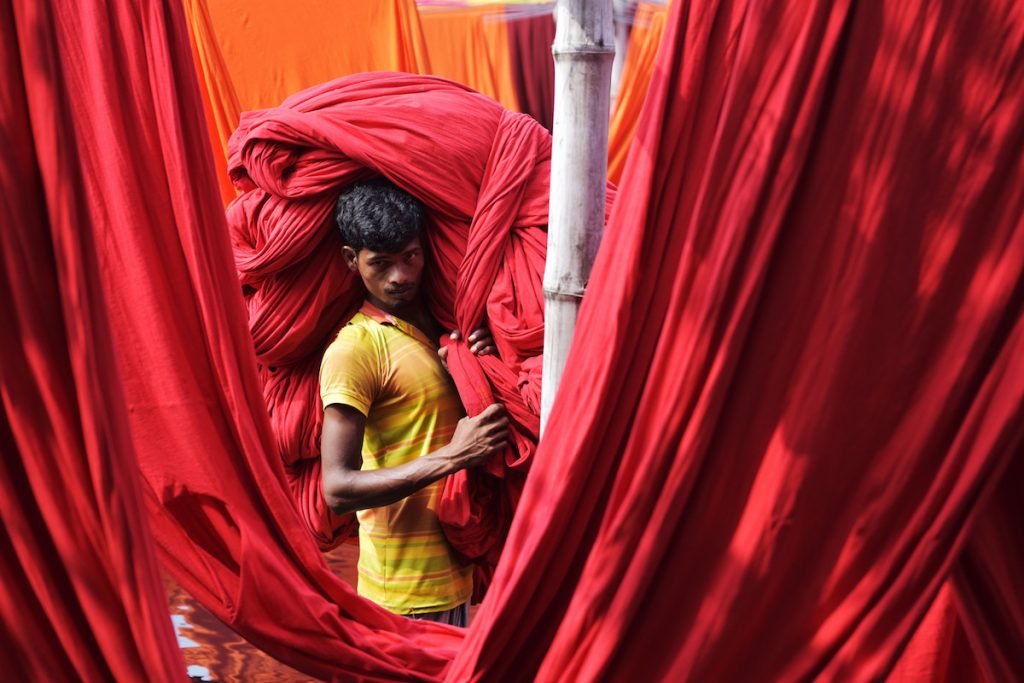Save lives or save livelihoods? Bangladesh, the world’s second largest apparel producer, is hoping it can do both as it begins vaccinating its garment workers who make clothes for major brands like H&M, Inditex and Marks and Spencer.
A surge in cases of the highly contagious COVID-19 Delta variant has seen thousands of garment factories shuttered as part of a nationwide lockdown in place until Aug 5.
The closure has coincided with big brands placing multi-million dollar clothing orders for consumers in some Western countries where restrictions are easing.
Factory owners fear brands may turn to other garment producers if their demands aren’t met.
Can Bangladesh vaccinate enough garment workers in time to prevent its export-orientated economy from collapse?
Why does it matter?
Low wages have helped Bangladesh build its garment industry, with some 4,000 factories employing 4 million mostly women workers.
Readymade garments are a mainstay of the economy, contributing almost 16% of the country’s GDP, according to the central bank.
Thousands of workers lost their jobs last year when international retailers canceled and postponed orders worth $3 billion.
Most factories have remained open through the pandemic but many workers, most of whom are in their mid-20s, fear further salary cuts if lockdowns prevent factories from operating.
Now the industry is in danger of another crisis with Bangladesh recording 258 deaths on Tuesday– it’s highest so far – and an infection rate of nearly 30%.
Will vaccinating garment workers help?
Bangladesh aims to inoculate the majority of its population by 2022 and has so far vaccinated around 3%.
Last week nearly 29,000 garment workers from factories supplying H&M and Marks and Spencer, received a first dose of the Moderna vaccine.
That is less than 1% of the total garment workforce.
“I never imagined that I would be able to get an American vaccine at such an early stage,” said Shefali Khatun, a 32-year-old sewing operator.
“There are so many workers in Bangladesh and we got it before all of them. I feel very lucky… initially I was a bit nervous, but after the shot I was fine. I can’t wait for my second dose,” she added.

What do factory owners in Bangladesh say?
Factory owners want their workers vaccinated as soon as possible.
“They are frontliners who have a huge contribution to the economic cycle, they contribute everyday. They need to be prioritized,” said Faruque Hassan, president of the Bangladesh Garment Manufacturers’ and Exporters Association.
What do labor leaders say?
Labor activists like Kalpona Akter, who heads the Bangladesh Center for Workers Solidarity, believes that factory owners should have pressed the government to vaccinate workers on a priority basis “a long time back.”
She recognizes the importance of vaccinating garment workers to keep global supply chains running but believes workers from other sectors in Bangladesh such as construction and transport should also be given priority.
Akter said the current closure of garment factories would not significantly impact multi-billion dollar clothing retailers and warned factories against using the closure as an excuse to lay off workers.

What happens next?
Vaccinations of garment workers are set to resume when the national lockdown ends on August 5.
For most of the pandemic Bangladesh has depended solely on the Serum Institute of India for vaccines. This led to shortages in May when India reduced its vaccine exports.
In July, Bangladesh struck deals with China’s Sinopharm, Russia’s Sputnik V, and received Moderna and Pfizer vaccines under the World Health Organization’s COVAX scheme.
(Reporting by Naimul Karim @Naimonthefield; Editing by Tom Finn for Thomson Reuters Foundation, the charitable arm of Thomson Reuters)






